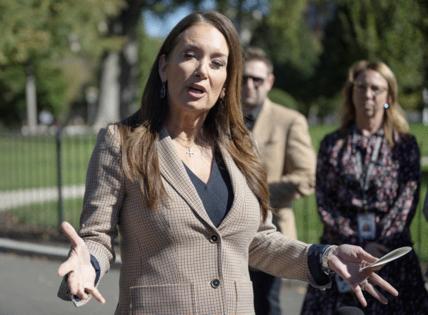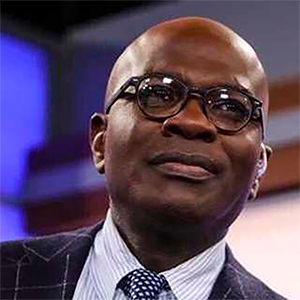Michael Hiltzik: The Republican war on food stamps has a long, ugly history
Published in Op Eds
Just over a decade ago, when Congress was taking its periodic look at the food stamp program, House Republicans lined up with their legislative hatchets.
Their plan was to slice some $40 billion out of the program over 10 years, a benefit reduction of more than 5%. Among the promoters of the cut was Rep. Doug LaMalfa, a Republican from the far north of California. He called the proposal a "modest change" and expressed wonderment that it faced opposition, including among Republican Senators.
"To think that we can't retract just a little bit of the spending over something that's grown exponentially in the last three or four years," he said at an Agriculture Committee hearing.
A bit of context is needed here. First, the food stamp program—formally the Supplemental Nutrition Assistance Program, or SNAP—had grown over the previous few years because Americans had been struggling through the Great Recession.
Second, as I pointed out then, LaMalfa was among the many budget-cutting Republicans who had their snouts in the farm-subsidy trough. In his case, the farm he co-owned with other family members collected $5.1 million in government crop subsidies from 1995 through 2012.
The proposed cuts didn't pass, not then. But the 2013 effort reflected a long-term Republican effort to cut food assistance programs for America's neediest families. That's important to keep in mind now, when the Trump administration already has taken steps to cut off all SNAP funding as of Saturday, Nov. 1.
The White House and the Department of Agriculture, which runs SNAP, blame the government shutdown, asserting that federal law prohibits it from advancing SNAP funds as long as the shutdown continues.
But that's untrue, according to legislative experts—and according to the USDA itself. As recently as Sept. 30, when the shutdown was still only a glimmer on the horizon, the agency stated in its "Lapse of Funding Plan" that $6 billion in contingency reserves that Congress had appropriated in 2024 and earlier this year would be "available to fund participant benefits in the event that a lapse occurs in the middle of the fiscal year," which began Oct 1.
The USDA subsequently removed the Lapse of Funding Plan from its website. It now maintains, according to a departmental press release, that "the contingency fund is a source of funds for contingencies, such as the Disaster SNAP program," which provides benefits for residents affected by natural disasters such as hurricanes, tornadoes and floods, not for government shutdowns. Never mind that the first Trump administration used the same funding to continue SNAP benefits during the 2019 government shutdown.
I asked the USDA for the legal underpinning of its SNAP cutoff this time around, and received in reply a partisan screed parroting the GOP position that the shutdown is the Democrats' fault: "We are approaching an inflection point for Senate Democrats," it stated. "Continue to hold out for the Far-Left wing of the party or reopen the government so mothers, babies, and the most vulnerable among us can receive timely...SNAP allotments."
Before further examining the legal backdrop of the administration's SNAP cutoff, let's examine the role SNAP plays in the government safety net and the broader economy.
SNAP is the government's largest food assistance program. Benefits are entirely federally funded, but administrative costs are shared by the feds and the states, 50-50. (Trump wants to raise the state burden of those costs to 75%.)
Last year SNAP's caseload reached nearly 42 million people. About two-thirds of the beneficiaries are in families with children and more than a third are in families with elderly or disabled members.
SNAP's eligibility standards are strict. Recipients must have net income below 100% of the federal poverty line (about $32,000 for a family of four). More than 80% of SNAP households earn less than that, according to the Center on Budget and Policy Priorities, which also calculated that more than 40% live in deep poverty, meaning their income is less than half of the poverty line. Recipients can't have more than $3,000 in assets such as cash or bank accounts (homes, retirement plans and cars needed for work aren't counted).
More than 21 million children, or more than one in four American children, live in SNAP households.
The program's benefits are nothing like lavish. The average benefit this year is $715 for a family of four, which works out to less than $2 per individual meal per day. That doesn't mean that the benefit cutoff is manageable for the average SNAP family, despite the assertions of LaMalfa and his ilk that the cuts the House contemplated in 2013 were "modest."
For those dependent on the program, the cutoff can devastate household budgets. "A tidal wave of need" faces families who have spent their October allotments and can't count on their benefit accounts being refreshed on Nov. 1, as my colleagues Kevin Rector, Jenny Gold, Ana Ceballos and Rebecca Plevin reported Tuesday. In California, 5.5 million residents, including 2 million children, will be forced deeper into penury.
Food banks and other private or institutional programs can't fill the vacuum left by the disappearance of federal benefits.
"People really don't understand the scale and scope of what is happening and the ripple effect it will have on the economy and with people just meeting their basic needs," Angela F. Williams, president and chief executive of United Way, told The Times.
What's seldom understood by the program's critics is its importance to the U.S. economy generally and the farm economy in particular. Because SNAP is counter-cyclical—meaning it expands when the economy slumps and shrinks during recoveries, every dollar spent on benefits yields as much as $1.50 in economic gains. As a team of USDA analysts calculated in 2019, every $1 billion in SNAP benefits produces a $1.5-billion gain in gross domestic product, "which supports 13,560 new jobs—including $32 million added income going to agricultural industries that support 480 agricultural jobs."
Indeed, farmers always have been among the biggest supporters of SNAP. Not only do they accept SNAP benefits at their community markets, but they also count on the program as a dependable customer for their crops. Like other safety net programs, SNAP has an impact on the economy that is especially powerful because recipients redeem their benefits promptly; the USDA has found that 97% of benefits are spent within one month of their issuance.
Despite its obvious virtues, congressional conservatives never have ceased trying to whittle down the program since its creation in 1939, when the effects of the Great Dperession still were being felt across the country.
Many of the most familiar criticisms reflect the "undeserving poor" myth—the notion that SNAP enrollees are lazy spongers on the public purse. A common claim is that food stamps are spent on luxury foods like lobster. A 2015 bill signed into law by Wisconsin's conservative Republican governor, Scott Walker, barred the use of SNAP funds to buy "crab, lobster, shrimp, or any other shellfish."
Most such claims arise from anecdotes of dubious reliability: "I have seen people purchasing filet mignons and crab legs with their [SNAP] cards," a Missouri Republican pushing a law to restrict SNAP purchases told the Washington Post in 2015. "When I can't afford it on my pay, I don't want people on the taxpayer's dime to afford those kinds of foods either."
In 2018, during Trump's first term, his administration proposed replacing half of SNAP benefits with "food boxes" containing "shelf-stable milk, ready-to-eat cereals, pasta, peanut butter, beans and canned fruit, vegetables, and meat, poultry or fish."
Nothing in the plan said who would prepare these boxes or decide what went into them, how they would be distributed, or why SNAP recipients couldn't be trusted to assemble their own market baskets. The administration did acknowledge, however, that the change would cost the states $2.5 billion a year in new administrative costs.
Surveys have found that SNAP households buy essentially from the same market basket as non-SNAP households — staples such as fresh fruits and vegetables, beef, pork and chicken.
Republican hostility to SNAP coalesced in the drafting of the budget bill enacted this summer, which cut $187 billion from the program over 10 years—"the largest cut to SNAP in history," in the judgment of the Center on Budget and Policy Priorities. About 4 million Americans would have their benefits cut substantially or eliminated altogether, the Congressional Budget Office calculated.
The measure would require some states to cover anywhere from 5% to 15% of benefit costs, up from zero. The measure also expanded the program's work requirements; under preexisting law, adults ages 18 to 54 without children in their household had to work or attend a training program for at least 80 hours a month to receive benefits for more than three months within any three-year period. The budget bill expanded that requirement to adults up to age 64.
Now we have the Trump White House exploiting the government shutdown to strip SNAP benefits from more than 40 million needy Americans with a single stroke.
Its explanation swears at the law, which mandates that benefits be continued without a break during any such shutdown. Whether the benefits can be saved is an open question; the District of Columbia and 25 states, including California, sued the administration Tuesday to block the cutoff. But administrative obstacles already erected by the USDA may have made the continuation of benefits past Nov. 1 without delay difficult, if not impossible.
The states say that laws passed last year and this year made clear that Congress intended payments to continue through a shutdown, and provided $6 billion in funding to ensure that happens.
But the cutoff has less to do with the law's mandates than the oft-expressed desire of this administration to get its way by imposing maximum pain and cruelty on the defenseless. In this government, men, women and children on the edge of hunger are merely pawns in a partisan campaign. Come Nov. 1, they still will be pawns, but hungrier.
____
©2025 Los Angeles Times. Visit at latimes.com. Distributed by Tribune Content Agency, LLC.
























































Comments